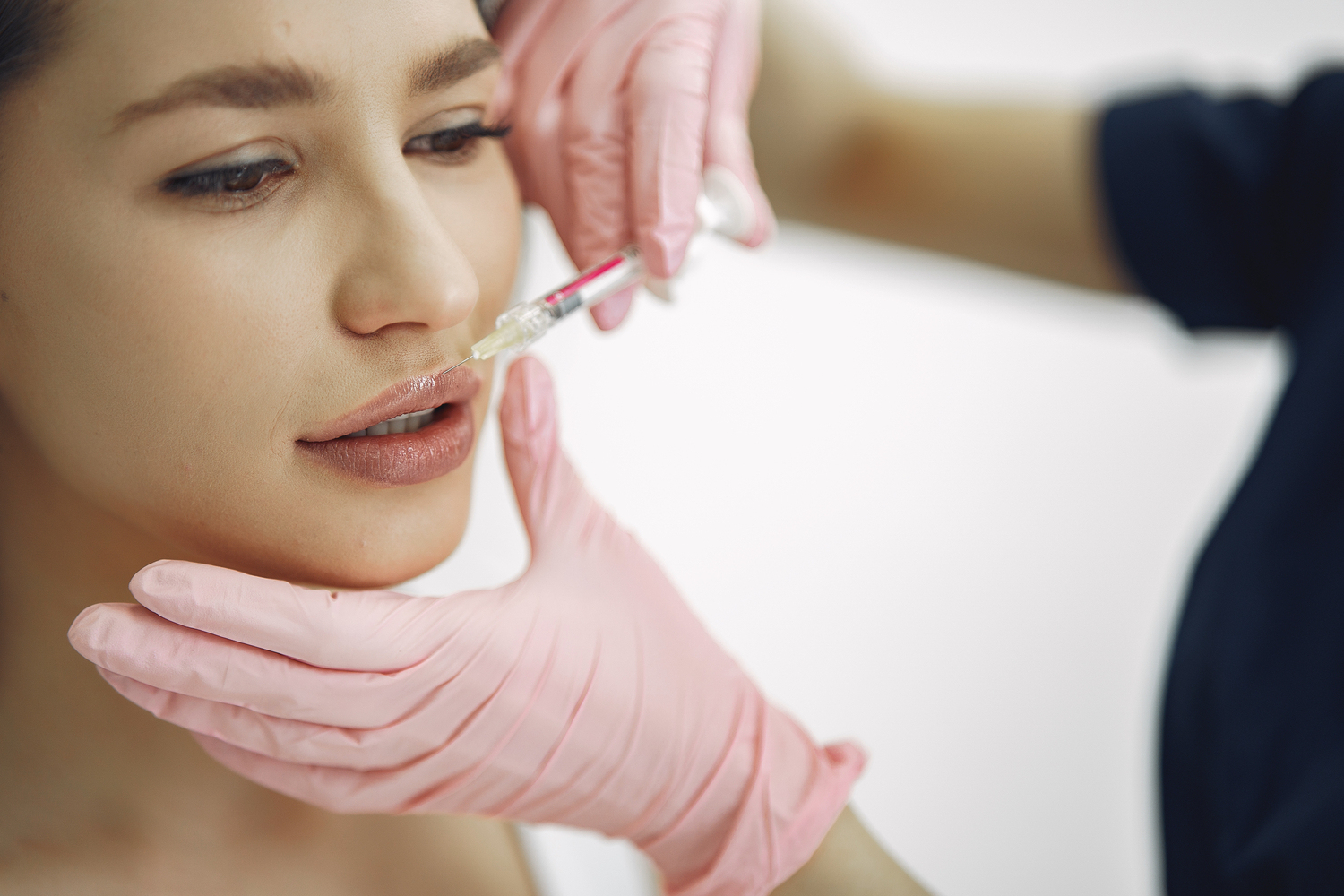What is The Difference Between PRF and PRP?
What’s the Difference Between PRF and PRP?
If you’re anything like us, you’re always looking for the latest and greatest ways to gain clear, smooth, age-defying skin. You’ve probably already heard of dermal fillers like Juvederm, Radiesse, or Restylane, but what about platelet-rich fibrin matrix (PRF)?
PRF takes traditional platelet-rich plasma (PRP) injections to the next level—all without unnatural ingredients. Stemming from platelet-rich fibrin (PRF), PRFM can truly transform your look by promoting blood flow, rejuvenating skin tissue, and rebuilding your skin’s natural framework.
The result?
Firmer skin, reduced wrinkles, added volume, lightened scars… need we say more? Our staff at Spa in the City absolutely loves PFRM for our Dallas-area patients because it offers results beyond what PRP can do. To learn more about the difference between PRF and PRP, keep reading, and we’ll highlight what you should know.
What is PRP and PRFM?
Both PRP and PRFM come from your blood. Wait… before you close your eyes and cringe, this is actually a good thing. Since you aren’t injecting outside substances into your body, you won’t have to worry about allergic reactions or your body rejecting anything. These injections are all natural and all you.
Experience the Benefits of PRP for Skin Rejuvenation →
So let’s go into a flash course on blood for a moment.
Blood is made of four main components:
- Red blood cells: carries oxygen to the body
- White blood cells: helps body fight infections
- Platelets: aids with blood clotting
- Plasma: liquid substance filled with proteins, nutrients, glucose, and more
When it comes to repair and regeneration of aging skin cells, platelets + plasma hold all the power. You can thank the versatile growth factors for that.
Okay, but what exactly are growth factors?
We totally get it. You’ve probably heard the term “growth factors” all over the place but never get a real explanation. Growth factors are the ultimate key for, well… growth, which is why they are literally found all over your body. They are groups of proteins designed to stimulate cell division and differentiation (basically, giving cells their unique “jobs” within the body).
Platelet-derived growth factors help stimulate muscle and connective tissue growth, making them effective for medical branches such as aesthetics, dermatology, orthopedics, and more. Whenever you isolate plasma from other blood components, you gain a high dose of growth factors ready to get to work!
Once injected into different areas of the body, growth factors boost the surrounding tissues. As a result, they can lead to cellular growth, formation of new blood vessels, and increased collagen production—all the good stuff needed for healing and promoting a youthful glow.
What’s the difference between PRF (or PRFM) and PRP
The main difference between PRF and PRP is the longevity of life of platelets and growth factors.
Here’s what we mean:
Unlike basic PRP, the platelet-rich fibrin matrix holds a higher concentration of platelets, and a higher concentration = increased effectiveness. PRFM is also more stable, meaning it can last longer in the body than PRP (about seven days rather than one).
How is PRFM made?
The PRFM process starts similarly to PRP. First, your blood is drawn then circulated through a centrifuge to separate the plasma from other blood components. However, this is where the process splits.
During the centrifuge process, PRP spins at a higher speed to remove all blood cells and stem cells. On the other hand, PRFM spins more slowly; therefore, some white blood cells and stem cells remain, which can have a huge impact on tissue regeneration after injection. After going through the centrifuge, PRP is placed into syringes for treatment.
In addition, PRFM doesn’t burn when injected like PRP. So on top of a high concentration of platelets, you get a more comfortable procedure!
What does PRFM treat?

Because of the diverse nature of platelets and growth factors, PRFM injections work for a variety of conditions (trust us, we’ve seen it first hand!). So whether you’re wanting to smooth out wrinkles, reduce the appearance of scars, or even restore facial volume loss, PRFM could be your solution. This all-natural alternative to fillers work great for under eye, and may be safer for the area than PRP injections.
Visible signs of aging
Until there’s a cure for aging skin (wouldn’t that be nice!), there will come a time when wrinkles, fine lines, and age spots appear. But just because they start making their debut, doesn’t mean they have to stick around.
Why does skin age?
It would be easy to simply say time, but we all know there’s more to skin aging than the passing years. While the list could literally go on and on, we can breakdown causes in three main categories:
(1) Genetics: As with a lot of things, genetics play a huge role in how slow or fast your skin ages. If your parents are in their 70s yet could pass for their 50s, odds are, you’ll have the same luck (depending on how well you take care of your skin). Plus, some people are born with more melanin (pigment), which is super important for combating sun damage.
And that brings us to…
(2) Sun damage: Sunshine comes with a lot of positives—vitamin D, warm days, tanning on the beach. But soaking up those rays also means you’re exposing your skin to harmful radiation. UV radiation damages the deep tissues of your skin (dermis) that house collagen and elastin fibers. Both are vital for maintaining your skin’s natural framework and allowing it to bounce back after facial expressions (think: squinting and frowning). Sun damage breaks down collagen and elastin networks, causing your skin to wrinkle, sag, and lose its natural volume.
(3) Lifestyle: Even if you slather on sunscreen and have amazing genes, your lifestyle choices could affect how well your skin ages. Things such as excess smoking and drinking, eating poorly, and constant stress can impact how fast you age. That’s why it’s so important to live as healthy as possible, including focusing on your mental wellbeing. Basically, when you feel good on the inside, you’ll look good on the outside.
🙌 Bonus: For more anti-aging benefits, you can combine PRFM with dermal fillers or Sculptra to boost collagen. If you want to treat skin laxity, PRFM combined with PDO threads could be your perfect solution. You can also choose a topical PRFM treatment after a RF microneedling, Clear + Brilliant, or Pixel.
PRF/PRFM may be applied topically after RF microneedling, C&B or Pixel.
Read Next: The wellness injection to try for glowing skin →
Tissue damage and scarring
Scars come from your body trying to heal itself after a wound (typically, mild wounds don’t scar). Keep in mind this is a completely normal process, so you shouldn’t be worried if an injury or even acne leads to scarring.
How do scars form?
Your body won’t create a scar unless you damage tissue in your dermis (remember, the deep layer). At this point, collagen fibers step in to fix the wound kind of like an internal bandaid. While collagen is great at doing its job, the scar tissue it creates doesn’t really match the tone or texture of normal tissue. Plus, if your body goes into collagen-production overload, the excess collagen could lead to a puffy, raised scar. Pitting scars (such as ones caused by severe acne) happen when you lose underlying fat or muscle tissue.
To be 100% honest, you can’t fully erase scars, but you can greatly improve their appearance to the point where they’re barely noticeable.
Enter: PRFM.
Since PRFM spins at a lower speed, not every cell gets separated from the plasma. When you combine the high concentration of platelets with leftover stem and white blood cells, it makes a gel-like substance that outshines the healing powers of PRP. Once injected into the treatment area(s), PRFM stimulates connective tissue growth and collagen to soften scars and grow healthier skin. This can be extremely beneficial for lingering scars that just don’t seem to fade, even after several years pass.
How to know if PRFM injections are right for you

The best way to understand whether or not PRFM injections are right for you is through a professional. That person will examine your skin and understand your concerns to better educate you about the decision.
We will say if you have:
- Scars
- Wrinkles
- Fine lines
- Sagging skin
- Flat cheeks
- Sunken eyes
- And more
Then PRFM injections could work for you! It’s also great for people who are sensitive to other types of anti-aging injectables such as dermal fillers. For those in the Dallas area, our staff at Spa in the City will be happy to help you decide whether or not PRFM could help you reach your skincare goals.
Up Next: Is Your Injector the Right Fit for Your Face? →
Learn more about the difference between PRP and PRF at Spa in the City
At Spa in the City, we’re dedicated to providing the best, most natural looking results possible. Our goal is for you to feel better in your skin, not erase your natural beauty. From the moment you step into our Dallas medical spa to the moment you leave, we will provide excellent client care while producing exceptional results. And as always we strive to find options that fit into your budget.
Driven by our values—honesty, passion, and client commitment—we combine the highest quality aesthetic treatments with an unforgettable experience. Our unique V.I.P. membership program allows our clients to save money and enjoy exclusive perks on our procedures and products all year long.
Get started today by using our virtual consultation tool or scheduling an appointment.
